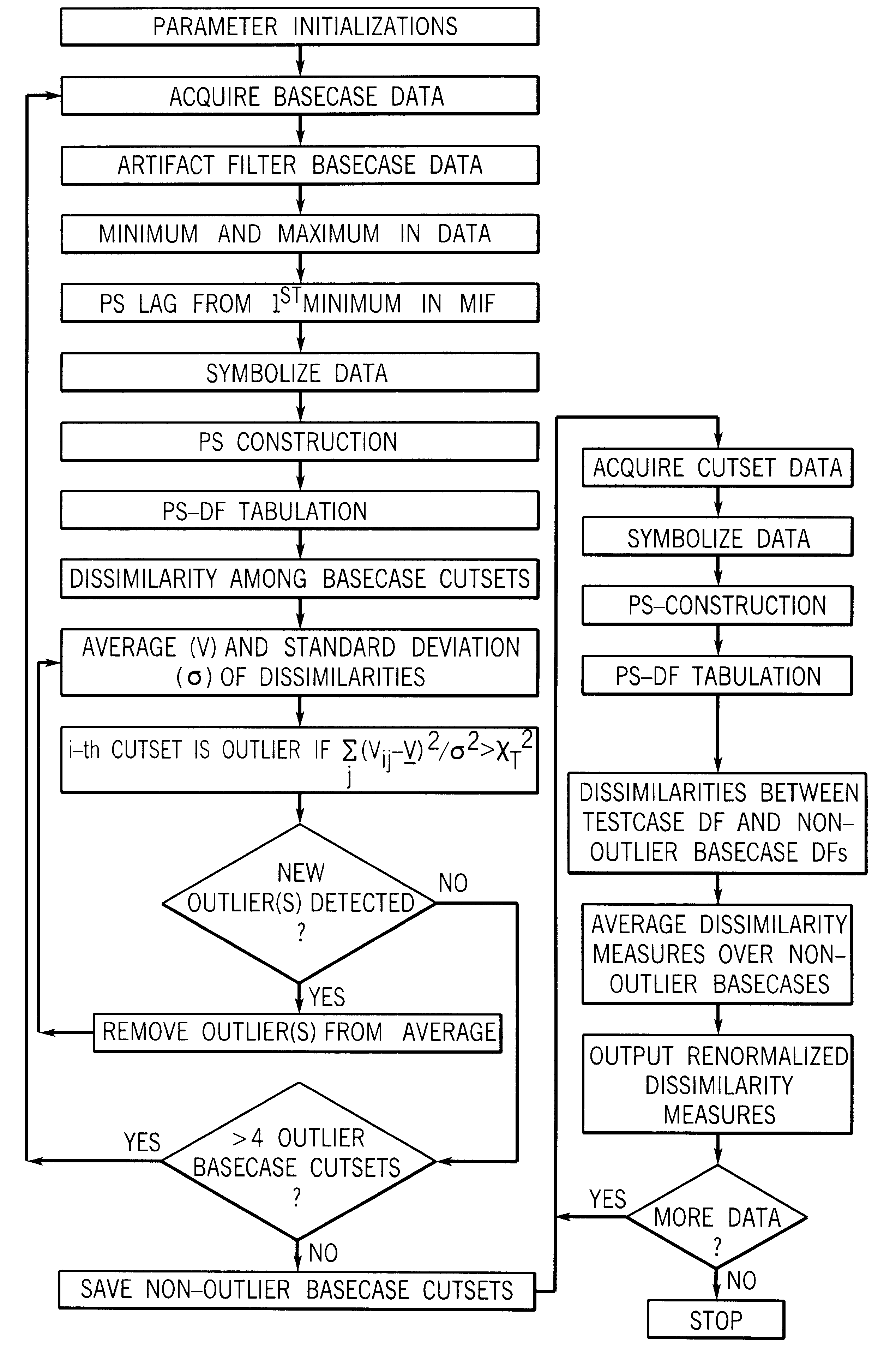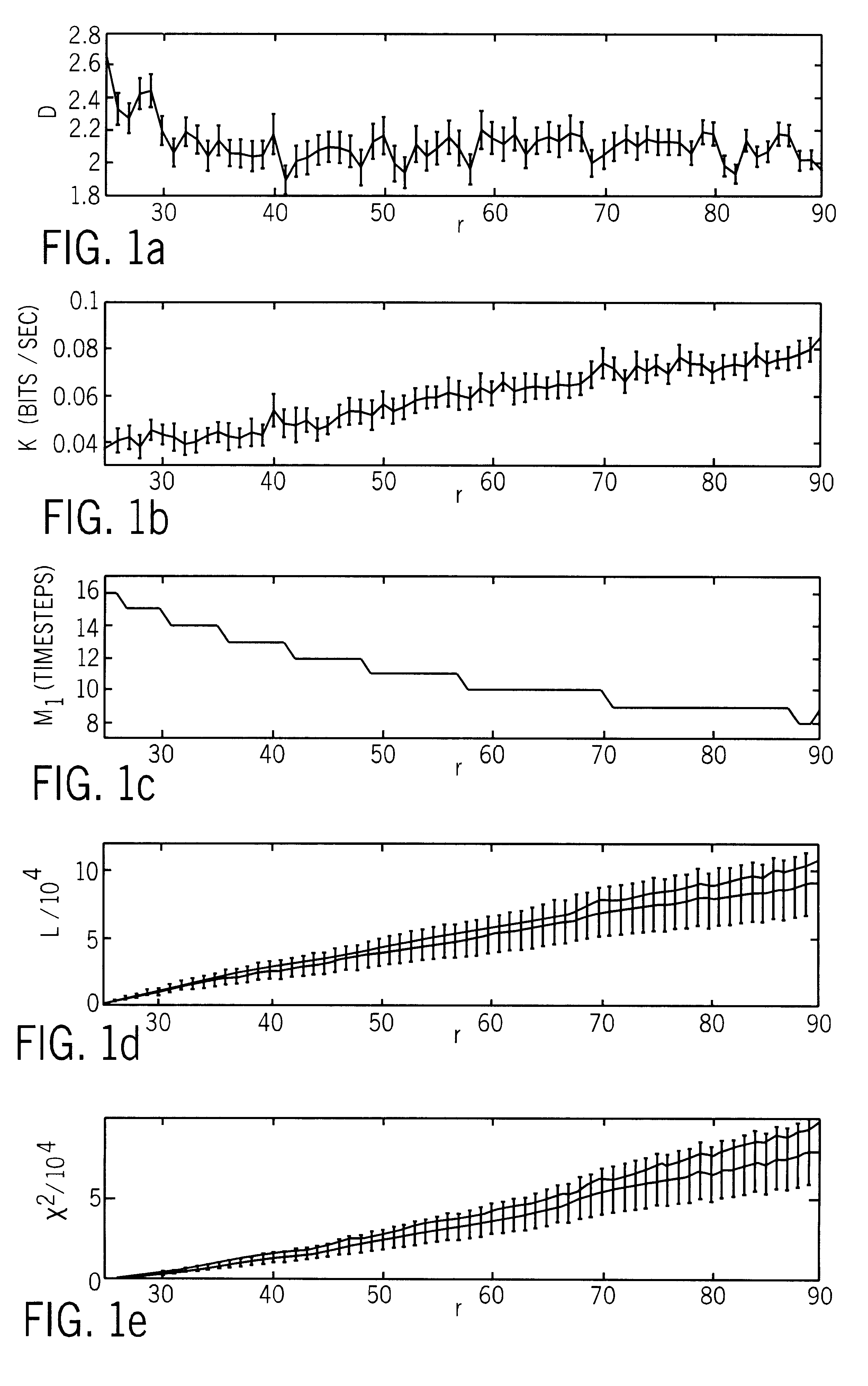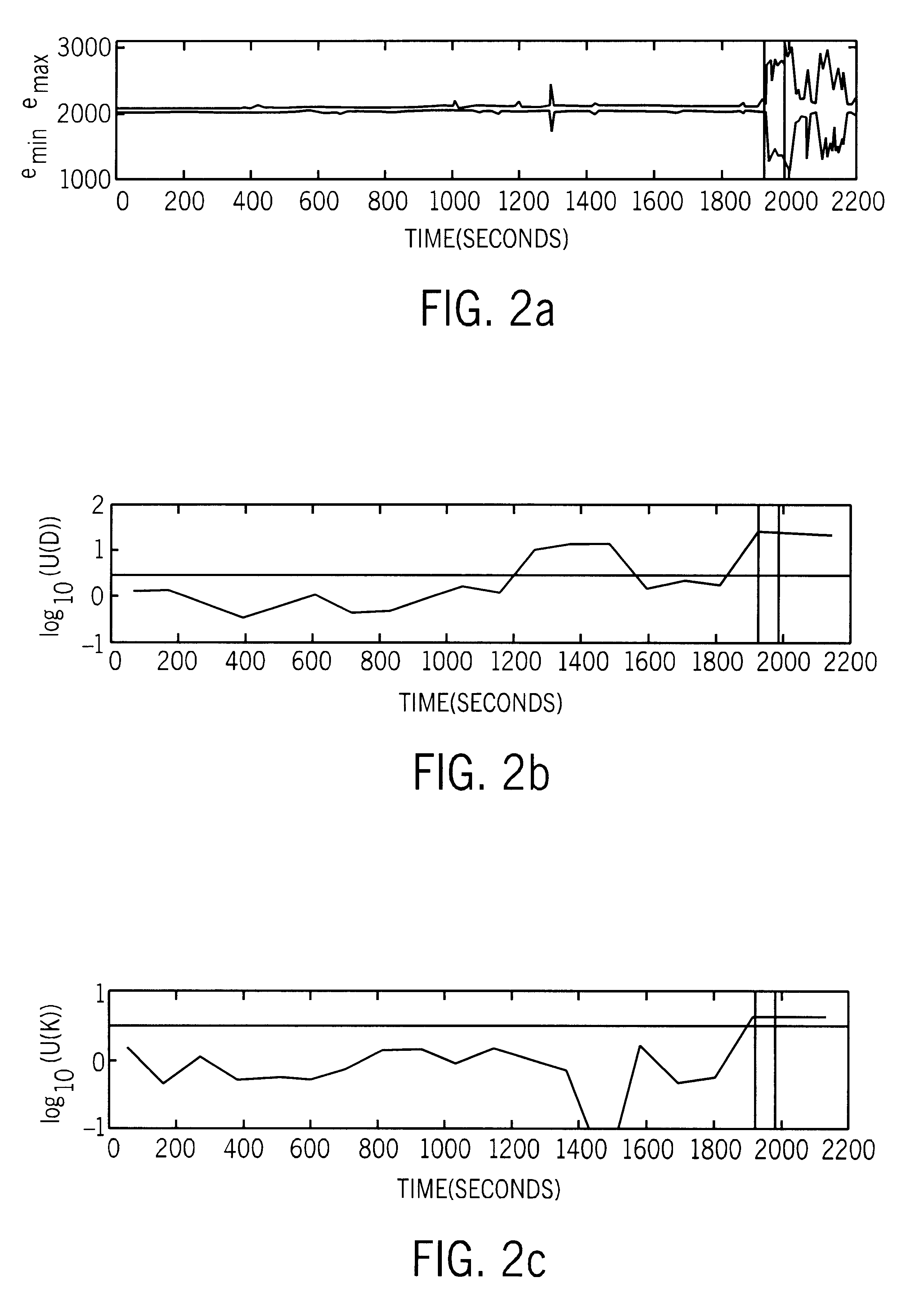Condition assessment of nonlinear processes
a nonlinear process and condition assessment technology, applied in the field of condition assessment of nonlinear processes, can solve the problems of requiring a relatively large amount of data and computing power, unable to detect differences in brain wave activity between conventional methods, and difficult or even impossible comparison of conditions or states
- Summary
- Abstract
- Description
- Claims
- Application Information
AI Technical Summary
Benefits of technology
Problems solved by technology
Method used
Image
Examples
example 2
Application to Bondarenko Model
The phase-space measures were also assessed by testing them on the Bondarenko neuron model [31], which is a coupled set of time-delayed ordinary differential equations: ##EQU1##
The signal from the i-th neuron is u.sub.i (t). The indices, i and j, run from 1 to M=10 for ten neurons. The matrix, a.sub.ij, is a set of coupling coefficients having uniformly random values, -2.ltoreq.a.sub.ij.ltoreq.2. The time delay is a constant, .tau..sub.j =10. The function, f(x)=c tanh(x), simulates nonlinear neural response to signals from neighboring neurons. Dissimilarity was measured within a region where the Bondarenko system is known to behave chaotically: 5.ltoreq.c.ltoreq.16. The model was integrated using a standard fourth-order Runge-Kutta method with a timestep of h=0.3. A time of 4.times.10.sup.8 h was allowed for the solution to achieve stationarity after initiating the integration with random impulses, u.sub.j (t=0)=.rho..sub.j with .rho..sub.j having unif...
example 3
Application to EEG Data
The invention has been demonstrated using sixteen-channel, analog scalp data in the bipolar montage from archival VHS tapes [27]. Only one channel (channel 13, closest to the patient's right eye) is used. This data is digitized at a sampling rate of 512 Hz with 12-bit precision, corresponding to integers between -2,048 and +2,047. Table 1 summarizes these nine datasets with monitoring periods of 1,380-3,115 seconds, and with the clinical seizure beginning at times that range over 966-2,775 seconds.
The invention has also been applied to digital EEG scalp data from other clinical sites in the 10 / 20 International System of electrode placement, sampled at 200 Hz. These data have 10-11 bits of precision, with signal amplitudes between 0-3,000 depending on the dataset. These data have 23-32 channels with monitoring periods of 2,217-20,000 seconds. The clinical seizures begin at times that range over 1,930-15,750 seconds. Only one clinically designated channel was ex...
PUM
 Login to View More
Login to View More Abstract
Description
Claims
Application Information
 Login to View More
Login to View More - R&D
- Intellectual Property
- Life Sciences
- Materials
- Tech Scout
- Unparalleled Data Quality
- Higher Quality Content
- 60% Fewer Hallucinations
Browse by: Latest US Patents, China's latest patents, Technical Efficacy Thesaurus, Application Domain, Technology Topic, Popular Technical Reports.
© 2025 PatSnap. All rights reserved.Legal|Privacy policy|Modern Slavery Act Transparency Statement|Sitemap|About US| Contact US: help@patsnap.com



